All issues

Predecessor
Volume 67, Issue 4
Displaying 1-4 of 4 articles from this issue
- |<
- <
- 1
- >
- >|
-
Yuki ITO, Mutsuo SANO, Nami FUKUTOME, Sho OOI, Midori KASAI2016 Volume 67 Issue 4 Pages 209-216
Published: 2016
Released on J-STAGE: April 16, 2016
JOURNAL FREE ACCESSWe aimed to determine the appropriate way of arranging rice in a bowl for the purpose of teaching how rice should be served. To determine the three-dimensional arrangement of rice in a bowl, we attempted to measure the height of rice in a bowl using a depth sensor defined as “Nakataka-do”, which is an index of the particular arrangement of rice in a bowl, where the center is higher than the edge. In addition to this, we defined “Tobidashi-do” as the degree of roughness of the contour of the rice. The weight and shape index of 29 rice samples were measured by 21 undergraduate students and 8 cooking teachers to determine the arrangement of rice in a bowl. The results of the analyses are as follows: The “Tobidashi-do” of the students’ samples were higher than those of the teachers. The range of “Nakataka-do” of 100~120 g rice samples showed a wide distribution. It was suggested that an appropriate arrangement of 100~120 g rice samples in a bowl is possible by being aware of “Nakataka-do.” Cluster analysis showed three distinct sample arrangements. On the basis of these results, we demonstrated the appropriate arrangement of rice in a bowl.View full abstractDownload PDF (3379K)
-
Mami OMOTE, Gisela DOI, Yuki HANAWA, Ikuyo OGURA2016 Volume 67 Issue 4 Pages 217-228
Published: 2016
Released on J-STAGE: April 16, 2016
JOURNAL FREE ACCESSThe purpose of this study is to clarify the Home Economics education situation in primary and secondary schools in Hessen, Germany.
The study is based on research of the standard curriculum and textbooks in use, as well as interviews with teachers, pupils and graduates while visiting a school in Hessen, Germany in September 2014.
The results were as follows:
1. In the curriculum of the Hessen primary and lower secondary school that we visited, Home Economics and sewing education have not been positioned as compulsory subjects.
2. One of the content items in “art” at primary school is “sewing education”. Textbooks are not used in art classes. The art classes vary, depending on schools and teachers.
3. Food education is included in “body”, which is one of the learning content items of the comprehensive subject “Sachunterricht”. The “Sachunterricht” textbooks contain the contents of food education. Nutritional, food, and cooking education are practiced in the primary school we visited.View full abstractDownload PDF (4834K)
-
Akio YANAI2016 Volume 67 Issue 4 Pages 229-237
Published: 2016
Released on J-STAGE: April 16, 2016
JOURNAL FREE ACCESSDownload PDF (918K)
-
Toshiyuki OHNISHI, Eiichiro ONO2016 Volume 67 Issue 4 Pages 238-242
Published: 2016
Released on J-STAGE: April 16, 2016
JOURNAL FREE ACCESSDownload PDF (3232K)
- |<
- <
- 1
- >
- >|